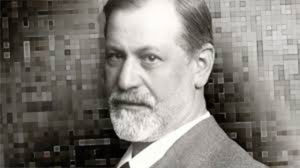Le contre-transfert, outil thérapeutique fondamental des psychothérapies conjointes parents-bébé
Résumé
Dans cet article, les auteurs développent le concept du contre-transfert tel qu’il a été progressivement élaboré dans la théorie psychanalytique ainsi que les particularités du contre-transfert dans les psychothérapies de la relation précoce.
Elles tentent de mieux cerner les fondements de ce concept et comment il a évolué dans ses applications cliniques. les auteurs proposent deux situations cliniques à partir desquelles elles développent leurs propres réflexions sur la dynamique transféro-contre-transférentielle liée au contexte particulier des psychothérapies conjointes parents-bébé. l’analyste occupe une place d’écoute, d’observateur et de récepteur émotionnel suffisamment perméable, d’autant plus exigeante que les psychothérapies conjointes des relations précoces se déploient dans le registre du pré-verbal, des communications primitives, des éprouvés sensoriels et des excitations pulsionnelles. Cela donne à ces rencontres une impulsion émotionnelle extrêmement forte qui met le psychanalyste dans la position de réceptacle, d’objet malléable, de pare-excitant et de contenant psychique dans son aspect de limite et de transformation psychique.
Les intenses manifestations contre-transférentielles, écho des identifications projectives pathologiques, sont utilisées et intégrées dans le processus thérapeutique grâce à leur analyse et à la perlaboration .
Samenvatting
In deze bijdrage werken de auteurs het concept tegenoverdracht uit, zoals het zich in de evolutie van de theoretische psychoanalyse ontwikkeld heeft, evenals de bijzondere kenmerken ervan in de psychotherapieën van vroegtijdige relaties. Ze proberen de grondbeginselen van dit concept beter vatten en na te gaan hoe het zich ontwikkelde in klinische toepassingen. De auteurs gaan uit van twee klinische situaties om hun eigen gedachten betreffende de dynamiek van over-dracht-tegenoverdracht te schetsen vanuit de specifieke context van ouder/baby- psychotherapieën. De analyticus treedt dan tegelijk op als luisteraar, waarnemer en voldoende gevoelige emotionele ontvanger, een rol die des te veeleisender is daar deze gezamenlijke therapie van vroegtijdige relaties zich afspeelt in het register van het preverbale, van de primitieve communicatie, van zintuiglijke gewaarwordingen en driftmatige prikkels. Daardoor krijgen deze ontmoetingen een hevig emotioneel karakter omdat de psychoanalyticus geplaatst wordt in de positie van ontvanger, kneedbaar voorwerp, buffer en psychische container, namelijk als bewaker van de limieten en als bevorderaar van psychise transformatie. .
Summary
In this paper, the authors explore the concept of the counter-transference as it has gradually come to be worked out in psychoanalytic theory; certain specific features of the counter-transference in the psychotherapy of early relationships are discussed in detail.
They attempt to clarify the basic principles underlying the concept and to show how it has developed in clinical practice. With two clinical illustrations as their basis, the authors put forward some innovative ideas on the transference / counter-transference dynamics as they unfold in the specific context of psychotherapies in which an infant and his or her parents are treated together. The analyst’s role is that of listener, observer and sufficiently-permeable emotional container; it is all the more demanding in that therapies which focus on early relationships within a family involve pre-verbal and primitive communication, sensory feelings and drive-related excitation. As a result, sessions are characterized by an intense emotional impact that requires the psychoanalyst to be a recipient, a malleable object, a barrier against excitation and a psychical container, i.e. one which both sets up boundaries and initiates the work of psychical transformation.





